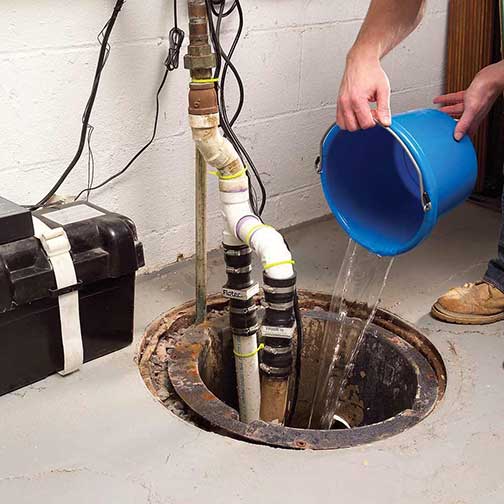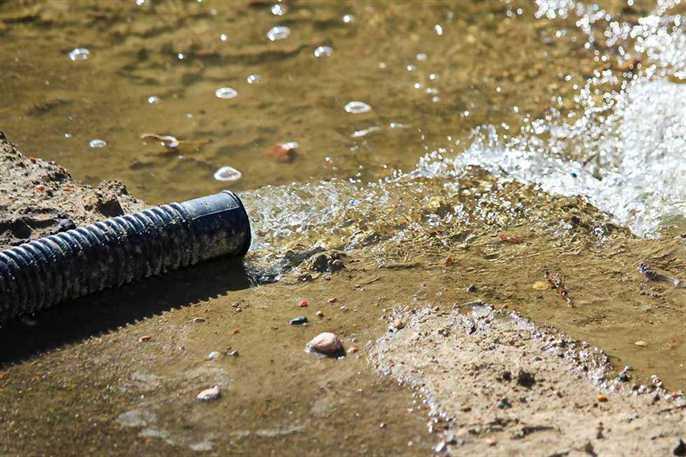Practical Tips for Taking Care of a Sump Pump
Practical Tips for Taking Care of a Sump Pump
Blog Article
The content in the next paragraphs in relation to How To Effectively Clean A Sump Pump is unquestionably interesting. Read it for yourself and decide what you think about it.

Sump pumps are essential parts in lots of homes, specifically in locations vulnerable to flooding or too much dampness. They aid protect against water damages by effectively removing excess water from basements or crawl spaces. Nonetheless, like any other device, sump pumps require regular maintenance to guarantee they work efficiently when required one of the most. Cleaning your sump pump is a vital part of its maintenance, and comprehending how to do it correctly can conserve you from pricey repairs and possible disasters.
Intro
Preserving a tidy sump pump is crucial for its proper functioning and durability. Disregarding this necessary job can bring about clogs, breakdowns, and inevitably, water damages to your building. Therefore, learning just how to clean up a sump pump is critical for house owners who depend on these tools to keep their cellars dry and protected.
Recognizing the Sump Pump
Prior to diving right into the cleansing procedure, it's essential to have a standard understanding of just how a sump pump works. Normally mounted in a pit or container below the basement floor, a sump pump contains numerous essential parts, including a pump, a float button, and a discharge pipeline. When water builds up in the pit, the float button activates the pump, which then pumps the water out with the discharge pipe, away from the structure's structure.
Signs of a Dirty Sump Pump
Knowing when your sump pump requires cleansing is crucial for avoiding prospective malfunctions. Some typical indications that suggest an unclean sump pump consist of unusual sounds during procedure, decreased water circulation, and visible particles in the pit. If you discover any one of these signs, it's important to clean your sump pump quickly to avoid any type of additional problems.
Planning for Cleaning
Before you begin cleaning your sump pump, it's important to take some safety precautions. Beginning by turning off the power to the pump to avoid any electric mishaps. In addition, put on proper protective equipment, such as handwear covers and safety glasses, to shield yourself from dirt, debris, and prospective pathogens.
Step-by-step Overview to Cleansing a Sump Pump
Turning off the Power
Begin by detaching the power supply to the sump pump to prevent any crashes while cleansing.
Removing Debris and Dust
Make use of a container or a scoop to remove any noticeable debris, dust, or debris from the sump pit. Dispose of the debris correctly to stop it from clogging the pump or the discharge pipeline.
Cleansing the Pump and Drift Change
As soon as the pit is free from particles, very carefully get rid of the pump from the pit. Check the pump and the float button for any kind of signs of damage or wear. Utilize a soft brush or cloth to cleanse the surfaces and get rid of any kind of built up gunk.
Flushing the System
After cleaning the pump and float button, flush the sump pit with clean water to get rid of any type of remaining dust or sediment. This will help ensure that the pump operates efficiently and effectively.
Looking For Proper Performance
Before re-installing the pump, carry out a fast examination to ensure that the float switch turns on the pump correctly. Pour some water into the sump pit and observe the pump's procedure. If every little thing is working correctly, you can rebuild the pump and reconnect the power supply.
Maintenance Tips to Keep Your Sump Pump Clean
In addition to routine cleansing, there are numerous maintenance suggestions you can comply with to maintain your sump pump in optimum problem:
Verdict
Cleansing your sump pump is a crucial element of its upkeep and makes certain that it operates successfully when you require it one of the most. By complying with the steps detailed in this overview and including normal upkeep into your routine, you can prolong the life expectancy of your sump pump and secure your home from water damage.
6 STEPS ON HOW TO CLEAN A SUMP PUMP PROPERLY
UNDERSTANDING SUMP PUMPS
Your sump pump plays a crucial role in protecting your home by managing and removing excess water. It primarily functions as a “shield”, guarding your basement against the damaging effects of water accumulation. The pump is housed in a sump pit in the lowest part of your basement, and its job is to pump out any water that collects there.
During heavy rainfalls or when snow melts rapidly, water can infiltrate your basement, posing potential risks like flooding, structural damage, and harmful mold growth. Here, the sump pump springs into action, pumping out the intruding water and directing it away from your home.
SAFETY FIRST
Before cleaning, remember to prioritize safety. Disconnect the sump pump from the power source to prevent any accidental electric shocks. Also, wear sturdy gloves to protect your hands from any sharp or dirty components within the pump.
REMOVE THE SUMP PUMP
After ensuring your safety, the next step is to remove the sump pump from its pit. Doing this might require careful maneuvering as you don’t want to damage any pump components. Once removed, clean the sump pit to remove any accumulated debris or sludge.
INSPECT THE PUMP
Inspect the pump for any visible signs of wear or damage. Check the power cord, float switch, and impeller housing. If any components look worn out or damaged, consider replacing them to ensure optimal performance.
CLEAN THE PUMP
Thoroughly clean the pump with warm, soapy water. Make sure to rid it of any dirt, gravel, or other debris that might impede its performance. You can use a toothbrush to clean the small, hard-to-reach parts of the pump.
REINSTALL THE SUMP PUMP
Reinstall the pump into the sump pit Make sure it’s positioned correctly to remove the water effectively Once it’s back in place, reconnect it to the power source TEST THE PUMP
Finally, pour some water into the pit to ensure the pump works correctly. It should start automatically and begin pumping out the water; if it doesn’t, check the power source and the positioning of the pump.
Remember, while cleaning your sump pump is an essential part of home maintenance, hiring a professional plumber for a thorough inspection and cleaning at least once a year is also important. This will ensure that your pump is in optimal condition, ready to protect your home from potential water damage.
BEST PRACTICES FOR CLEANING SUMP PUMP DISCHARGE PIPES
Regular Inspection: Regularly inspect your discharge pipes, especially during heavy rainfall or snowmelt periods. Look for any signs of blockage or damage. Early detection of problems can prevent serious issues down the line. Periodic Cleaning: Over time, sediment and debris can accumulate in the discharge pipes, impeding the flow of water. Regular cleaning helps keep the pipes clear and functioning efficiently. You can use a high-pressure water jet to effectively clean the pipes. Insulation During Winter: In colder climates, discharge pipes can freeze, blocking the outflow of water. Protect your discharge pipes from freezing temperatures by insulating them with foam pipe insulation. This will ensure the sump pump can continue to discharge water even in freezing conditions. Proper Positioning: The discharge pipe should be positioned to direct water away from your home’s foundation. Improper positioning can lead to water seeping back into the basement. Ensure the pipe is long enough and angled correctly. Installation of a Check Valve: A check valve prevents water from flowing back into your sump pit after the pump has pushed it out. Installing a check valve helps maintain the efficiency of your sump pump and reduces the risk of flooding. Minimize Pipe Turns: Every curve or turn in the discharge pipe can decrease the efficiency of water flow. By minimizing turns and bends in your discharge pipe, you can increase the efficiency of your sump pump. https://www.fullspeedplumbing.com/how-to-clean-a-sump-pump-properly9999/

We hope you enjoyed reading our topic on Steps to Cleaning Your Sump Pump Properly. Thank you so much for taking a few minutes to read our piece of content. Enjoyed our write-up? Please quickly share it. Help other people find it. Thank-you for going through it.
Book A Free Estimate Report this page